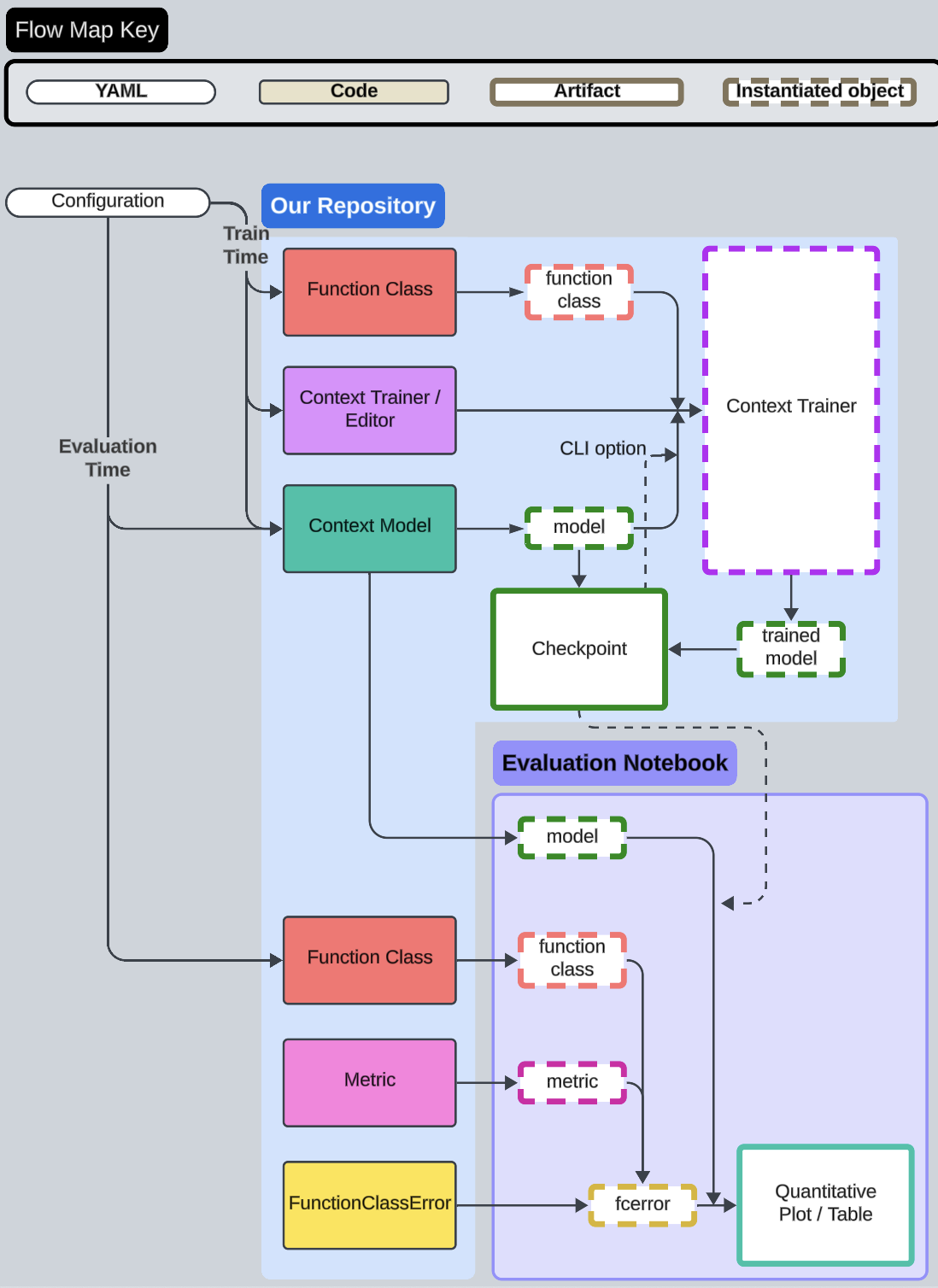Set up your environment with:
conda init zsh
conda env create -f environment.yaml
conda activate in-context-learning
Alternatively, you can instantiate a codespace (docs) that automagically does the above!
Run a training run specified by <config_file> with:
python src/ --config conf/train/<config_file>.yml
Resume a training run specified by <config_file> starting from <run_id>/<checkpoint_file> with:
python src/ --config conf/train/<config_file>.yml --resume models/<run_id>/<checkpoint_file>
We follow the following flow for objects in this repository:

Initializing a FunctionClass or ContextModel passes the dictionary parsed directly from yaml as arguments. We recommend reading examples for your respective function class in conf/
Make sure to initialize your parent class with super().__init__(...) in your __init__ routine for your custom FunctionClass or ContextModel. Omitting this can result in unexpected (and currently unchecked) errors!
We try to make it easy to contribute by adding models or function classes:
We wrap all sequence architectures and baselines as ContextModels. The order of calls against a ContextModel is as follows:
- We
__init__theContextModeldirectly from the yaml configuration - Inside the training loop and during evaluation, we call
evaluateto generate predictions
ContextModels thus have only two required methods:
__init__(...)evaluate(self, xs: torch.Tensor, ys: torch.Tensor) -> torch.Tensor
In addition, we require both .context_length: int and .name: str to be set for evaluation and visualization.
To use your context model, add an identifier to src/models/__init__.py and refer to it as type: <your identifier> in yaml. Examples are in conf/include/models/
We also provide an abstraction to compose hybrid architectures as a collection of blocks. The currently supported blocks are in src/models/hybrid.py. To add a block, add an identifier to SUPPORTED_BLOCKS in src/models/hybrid.py and an entry to MAPPING in the function SPEC_TO_MODULE in the same file. To pass a value to the configuration fed into your new block, just specify it as a key/value pair in your model: mapping in YAML. Examples of this are in conf/include/models/composed.yml, under defs -> base.
We take the approach of framing each function class as an iterator, where the boilerplate of making the iterator work for our training scheme (ContextTrainer) is implemented for you. The order of calls against a FunctionClass is as follows:
- We
__init__theFunctionClasswith the parsed yaml configuration- this calls
_init_param_dist(), which should produce atorch.distributions.Distribution- Note: If the distributions implemented in PyTorch are not enough, we also provide a way to "combine" distributions
- this calls
- At the start of the training loop and/or evaluation, we produce an iterator with
__iter__to sample batches from - During the training loop and/or evaluation, we sample x,y batches with
__next__- this calls
evaluateto deterministically turn a sampled batch of x values and a sampled batch of parameters into a prediction
- this calls
FunctionClasses thus have three methods you need to implement:
__init__(...)_init_param_dist(self)evaluate(self, x_batch: torch.Tensor, *params: torch.Tensor) -> torch.Tensor
In addition, you need to export your function class in src/function_classes/__init__.py
To use your function class, you can specify the key you specified in src/function_classes/__init__.py as type: <that key> in a training yaml configuration. Examples are in conf/train/